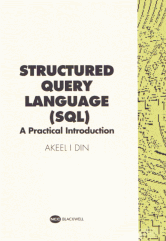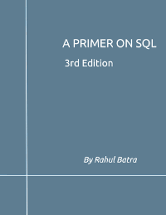Last Updated on October 25, 2024
4. PostgreSQL Documentation by The PostgreSQL Global Development Group
PostgreSQL Documentation is the official documentation of PostgreSQL. It has been written by the PostgreSQL developers and other volunteers in parallel to the development of the PostgreSQL software.
It describes all the functionality that the current version of PostgreSQL officially supports.
To make the large amount of information about PostgreSQL manageable, this book has been organized in several parts. Each part is targeted at a different class of users, or at users in different stages of their PostgreSQL experience:
- Part I is an informal introduction for new users.
- Part II documents the SQL query language environment, including data types and functions, as well as user-level performance tuning. Every PostgreSQL user should read this.
- Part III describes the installation and administration of the server. Everyone who runs a PostgreSQLserver, be it for private use or for others, should read this part.
- Part IV describes the programming interfaces for PostgreSQL client programs.
- Part V contains information for advanced users about the extensibility capabilities of the server. Topics include user-defined data types and functions.
- Part VI contains reference information about SQL commands, client and server programs. This part supports the other parts with structured information sorted by command or program.
- Part VII contains assorted information that might be of use to PostgreSQL developers.
5. Structured Query Language (SQL): a Practical Introduction by Akeel I Din
 Chapters cover:
Chapters cover:
- Introduction.
- A Rough Guide to SQL – presents an overview of the SQL language. The major commands are described from a functional point of view.
- Creating and Maintaining Tables – starts by considering the DDL as defined by the ANSI/ISO standard. The later sections of this chapter describe how to create, alter and delete SQL tables.
- Querying SQL Tables – the method of interrogating an SQL database.
- Adding and Updating Data.
- Data Integrity – looks at the concepts used by SQL to restrict the information that can be added to the database.
- Views – introduce the reader to another database object; the view.
- Database Security – looks at the security features that are built into SQL itself and also addresses some of the wider aspects of database security.
- Transaction Processing.
- The Database System Catalog – describes the structure and content of a typical system catalog by looking at the system tables of some popular commercial SQL DBMSs.
- Embedding SQL in a Host Language – looks at the other method of using SQL, programmatic SQL.
The book is released under a free to use non-commercial license.
Read the book (unavailable)
6. A Primer on SQL by Rahul Batra
 As the title suggests, this book offers a gentle introduction to the basics of SQL.
As the title suggests, this book offers a gentle introduction to the basics of SQL.
The book is not a reference work.
This guide is open source, published under the Creative Commons Attribution-NonCommercial-NoDerivs 3.0 Unported (CC BY-NC-ND 3.0) license.
Next page: Page 3 – SQL for Web Nerds and more books
Pages in this article:
Page 1 – Practical PostgreSQL and more books
Page 2 – PostgreSQL Documentation and more books
Page 3 – SQL for Web Nerds and more books
All books in this series:
| Free Programming Books | |
|---|---|
| Ada | ALGOL-like programming language, extended from Pascal and other languages |
| Agda | Dependently typed functional language based on intuitionistic Type Theory |
| Arduino | Inexpensive, flexible, open source microcontroller platform |
| Assembly | As close to writing machine code without writing in pure hexadecimal |
| Awk | Versatile language designed for pattern scanning and processing language |
| Bash | Shell and command language; popular both as a shell and a scripting language |
| BASIC | Beginner’s All-purpose Symbolic Instruction Code |
| C | General-purpose, procedural, portable, high-level language |
| C++ | General-purpose, portable, free-form, multi-paradigm language |
| C# | Combines the power and flexibility of C++ with the simplicity of Visual Basic |
| Clojure | Dialect of the Lisp programming language |
| ClojureScript | Compiler for Clojure that targets JavaScript |
| COBOL | Common Business-Oriented Language |
| CoffeeScript | Transcompiles into JavaScript inspired by Ruby, Python and Haskell |
| Coq | Dependently typed language similar to Agda, Idris, F* and others |
| Crystal | General-purpose, concurrent, multi-paradigm, object-oriented language |
| CSS | CSS (Cascading Style Sheets) specifies a web page’s appearance |
| D | General-purpose systems programming language with a C-like syntax |
| Dart | Client-optimized language for fast apps on multiple platforms |
| Dylan | Multi-paradigm language supporting functional and object-oriented coding |
| ECMAScript | Best known as the language embedded in web browsers |
| Eiffel | Object-oriented language designed by Bertrand Meyer |
| Elixir | Relatively new functional language running on the Erlang virtual machine |
| Erlang | General-purpose, concurrent, declarative, functional language |
| F# | Uses functional, imperative, and object-oriented programming methods |
| Factor | Dynamic stack-based programming language |
| Forth | Imperative stack-based programming language |
| Fortran | The first high-level language, using the first compiler |
| Go | Compiled, statically typed programming language |
| Groovy | Powerful, optionally typed and dynamic language |
| Haskell | Standardized, general-purpose, polymorphically, statically typed language |
| HTML | HyperText Markup Language |
| Icon | Wide variety of features for processing and presenting symbolic data |
| J | Array programming language based primarily on APL |
| Java | General-purpose, concurrent, class-based, object-oriented, high-level language |
| JavaScript | Interpreted, prototype-based, scripting language |
| Julia | High-level, high-performance language for technical computing |
| Kotlin | More modern version of Java |
| LabVIEW | Designed to enable domain experts to build power systems quickly |
| LaTeX | Professional document preparation system and document markup language |
| Lisp | Unique features - excellent to study programming constructs |
| Logo | Dialect of Lisp that features interactivity, modularity, extensibility |
| Lua | Designed as an embeddable scripting language |
| Markdown | Plain text formatting syntax designed to be easy-to-read and easy-to-write |
| Objective-C | Object-oriented language that adds Smalltalk-style messaging to C |
| OCaml | The main implementation of the Caml language |
| Pascal | Imperative and procedural language designed in the late 1960s |
| Perl | High-level, general-purpose, interpreted, scripting, dynamic language |
| PHP | PHP has been at the helm of the web for many years |
| PostScript | Interpreted, stack-based and Turing complete language |
| Prolog | A general purpose, declarative, logic programming language |
| PureScript | Small strongly, statically typed language compiling to JavaScript |
| Python | General-purpose, structured, powerful language |
| QML | Hierarchical declarative language for user interface layout - JSON-like syntax |
| R | De facto standard among statisticians and data analysts |
| Racket | General-purpose, object-oriented, multi-paradigm, functional language |
| Raku | Member of the Perl family of programming languages |
| Ruby | General purpose, scripting, structured, flexible, fully object-oriented language |
| Rust | Ideal for systems, embedded, and other performance critical code |
| Scala | Modern, object-functional, multi-paradigm, Java-based language |
| Scheme | A general-purpose, functional language descended from Lisp and Algol |
| Scratch | Visual programming language designed for 8-16 year-old children |
| SQL | Access and manipulate data held in a relational database management system |
| Standard ML | General-purpose functional language characterized as "Lisp with types" |
| Swift | Powerful and intuitive general-purpose programming language |
| Tcl | Dynamic language based on concepts of Lisp, C, and Unix shells |
| TeX | Markup and programming language - create professional quality typeset text |
| TypeScript | Strict syntactical superset of JavaScript adding optional static typing |
| Vala | Object-oriented language, syntactically similar to C# |
| VHDL | Hardware description language used in electronic design automation |
| VimL | Powerful scripting language of the Vim editor |
| XML | Rules for defining semantic tags describing structure ad meaning |
